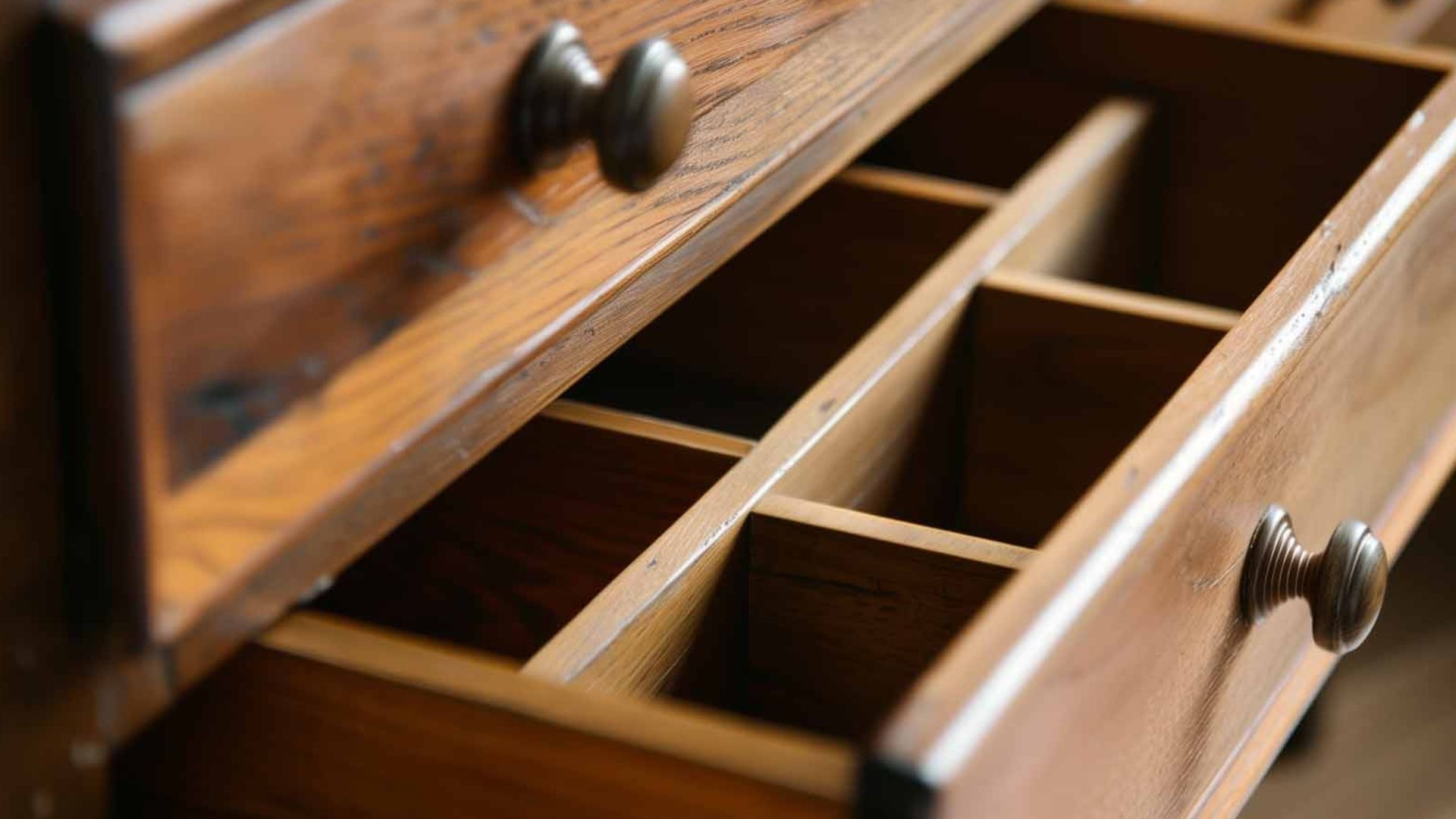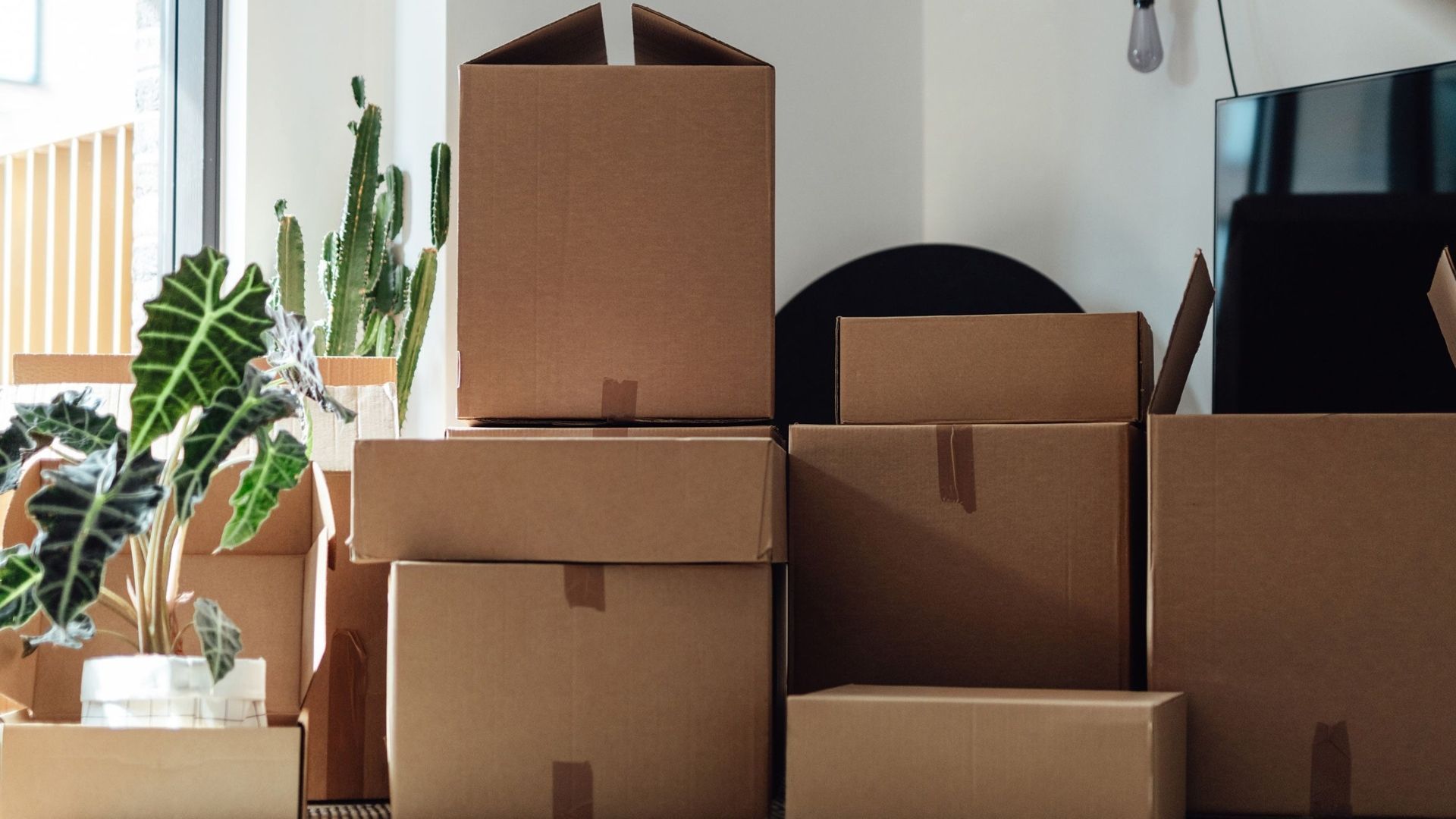Does Saran Wrap Protect Furniture When Moving?
Yes, saran wrap does protect furniture when moving, but only when used correctly. Professional movers use plastic wrap (also called stretch wrap) to keep furniture safe from dust, dirt, and scratches during transport. However, regular kitchen saran wrap is too thin and weak for most moving jobs.
What Is Saran Wrap and How Does It Work for Moving?
Saran wrap for moving is different from what you have in your kitchen. Professional-grade moving wrap is much thicker, stronger, and stickier than anything you'd use on your leftovers. While kitchen wrap might work for small items, you need the heavy-duty version for furniture.
Moving plastic wrap is a sheet of clear, durable plastic hundreds of feet long. It comes in the same basic shape as a roll of Saran Wrap, but a roll of shrink wrap is about eighteen inches long and is as thick and heavy as a log.
Types of Plastic Wrap for Moving
Stretch Wrap: This is the most common type. It stretches around furniture and sticks to itself, creating a tight seal.
Cling Wrap: Cling wrap offers excellent adhesion and can cling tightly to various surfaces, making it ideal for protecting furniture, appliances, and other items.
Furniture Wrap: Specifically designed for furniture protection, furniture wrap is typically thicker and more durable than regular plastic wrap. It provides enhanced cushioning and protection against impact.
Benefits of Using Saran Wrap for Furniture Protection
Keeps Your Furniture Clean
It helps protect your furniture from rain, snow, dust, and dirt since it creates a seal around your items. This is especially important during long-distance moves or when storing furniture.
Holds Moving Blankets in Place
It secures the moving blankets in place without leaving sticky adhesive residue on your furniture. This means your protective padding stays where it should during the move.
Keeps Drawers and Doors Closed
It helps keep drawers and cabinets closed during transportation, making your bulky and heavy pieces easier and safer to carry. No more worrying about drawers sliding out during the move.
Easy to Remove
It's easy to remove when you unpack—just cut it, ball it up, and toss it. Unlike tape, it won't leave sticky residue on your furniture.
Protects Against Scratches
During transit, furniture is susceptible to scratches, scuffs, and other forms of damage. Plastic wrap acts as a protective barrier, reducing the risk of such mishaps.
How to Properly Wrap Furniture with Saran Wrap
Step 1: Clean Your Furniture First
Before wrapping anything, clean your furniture completely. Ensure everything is properly clean and dry before you use a stretch wrap for furniture. Stains and scratches can arise from wrapping debris or dirt on your item.
For different furniture types:
- Upholstered furniture: Vacuum and wipe with a damp cloth. Let it dry completely.
- Wood furniture: Use a dry cloth to remove dust.
- Leather pieces: Vacuum with a soft attachment, clean with mild soap and water, then apply leather conditioner.
Step 2: Prepare Your Furniture
Empty out your dressers and cabinets to help with both weight and safety. Remove any loose parts that could break or get lost during the move.
Step 3: Apply Protective Padding First
Remember that plastic wrap doesn't provide any padding. To protect your furniture from dings and dents, you should put a layer of blankets, towels, or another soft material between the furniture and the wrap.
Step 4: Wrap the Furniture
To wrap a large piece, you'll need to hold the roll as you walk around the furniture – the plastic film will unwrap as you go. Follow these steps:
- Have someone hold the wrap against the furniture for the first round
- Start from the bottom and wind the saran wrap horizontally around the furniture item
- Wrap tightly and create multiple layers for better protection
- Cut the wrap when you're done – it will stick to itself
Step 5: Secure the Corners
Corners are often prone to damage during a move. Apply plastic wrap for packing items to hold foam padding or cardboard before you wrap your furniture in moving blankets and more plastic wrap.
What Furniture Should You Wrap?
Upholstered Furniture
Wrap fabric furniture (couches, armchairs, dining room chairs, etc.) with plastic wrap to protect it against dust, dirt, stains, and moisture. You can safely use plastic wrap directly on fabric upholstery.
Dressers and Cabinets
We find it's easiest to move dressers and wardrobes when the drawers are locked into place with a few layers of plastic wrap. This prevents drawers from sliding out during transport.
Mattresses
Use plastic wrap to protect mattresses from dirt and moisture. Make sure the mattress is completely dry before wrapping to prevent mold.
Tables and Desks
Wrap table legs and tops separately if you take them apart. Keep all screws and hardware in labeled bags.
When NOT to Use Saran Wrap
Wooden Furniture Going into Storage
You should avoid wrapping wooden furniture in plastic if you plan on storing it, as plastic can trap moisture and warp the wood, plus it may damage certain finishes.
Leather Furniture in Hot Weather
When going into storage or in the heat of a mid-summer move, shrink wrap can actually adhere to the leather. Keep cloth pads in between the leather and the plastic shrink wrap.
Antique or Delicate Finishes
Be careful if your furniture has a delicate finish, like faux paint or antique glass, because the plastic could stick to it.
Common Mistakes to Avoid
Using Kitchen Saran Wrap for Heavy Items
For minimal items or clothing, you can use Saran Wrap to hold things together for a move. For heavier-duty jobs, you'll need to purchase professional plastic wrap for moving.
Wrapping Dirty Furniture
Always clean furniture before wrapping. Trapped dirt can scratch surfaces during transport.
Not Using Enough Layers
Just be sure to use enough of it, or it may tear (even though it is fairly resistant to that). Multiple thin layers work better than one thick layer.
Forgetting to Secure the Start
You'll notice pretty quickly that shrink wrap doesn't generally stick to your stuff; it only sticks to itself. To get that shrink-wrapped tight right from the start you'll need to tie it around one foot or leg or have someone hold the free end.
Environmental Impact and Alternatives
The Environmental Cost
It's not good for the environment. The moving industry creates a lot of waste, and since plastic wrap for furniture can't be reused or recycled, it unfortunately ends up in landfills.
Eco-Friendly Alternatives
If you're interested in having an ecofriendly move and avoiding plastic wrap altogether, you can protect and waterproof your wrapped furniture with things like reusable tarps and ponchos.
Other alternatives include:
- Reusable moving blankets
- Old sheets and towels
- Cardboard and tape
- Furniture pads from recycled materials
Cost and Where to Buy
How Much Do You Need?
I wrapped a bed, dresser, night stand, 2 bookcases, cedar chest, 3 other chests, 2 chairs, table and its legs. It helped protect the furniture from dust and exhaust. It was well worth the investment.
For a four-bedroom house, you'll likely need 2-3 rolls of professional-grade plastic wrap.
Where to Buy
You can find moving plastic wrap at:
- Hardware stores like Home Depot
- Moving supply stores
- Online retailers like Amazon
- U-Haul locations
- Local moving companies that sell supplies
Professional Moving vs. DIY
When to Hire Professionals
If you're planning a big move, consider hiring professional movers. They have the right tools and experience to wrap furniture properly. Packing services can save you time and reduce the risk of damage.
DIY Moving Tips
If you're doing it yourself, make sure you have:
- Enough helpers (plastic wrap requires two people)
- The right type of wrap for your furniture
- Proper padding underneath
- A clear plan for each piece
Other Uses for Plastic Wrap During Moving
Keeping Hardware Together
Instead of coming up short on screws, nuts, and bolts, place all the hardware into a plastic bag, seal it shut, then use saran wrap to affix it to the bed frame or piece of furniture.
Protecting Liquids from Spilling
Remove the caps or tops from the bottles or jars, place a piece of stretch wrap over the opening, and secure it with a rubber band. When you put the cap or top back on, the bottle or jar will be leakproof.
Keeping Silverware Organized
Simply remove your utensil holder from the drawer and wrap a few layers of plastic wrap around the whole thing. Now you can set your silverware tray into a box and all your cutlery will stay contained.
Final Thoughts
Saran wrap absolutely protects furniture when moving, but success depends on using the right type and proper technique. Professional-grade plastic wrap works much better than kitchen wrap for most furniture. Always clean your furniture first, use padding underneath, and apply multiple layers for the best protection.
While plastic wrap is very helpful for moving, remember its environmental impact. Consider eco-friendly alternatives when possible, or hire professional movers who can minimize waste while keeping your furniture safe.
For your next move, whether you're going across town or need long-distance moving services, proper furniture protection will save you money and stress in the long run. The small cost of quality plastic wrap is worth it to keep your furniture looking great in your new home.



